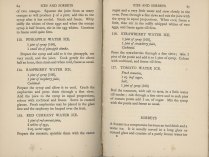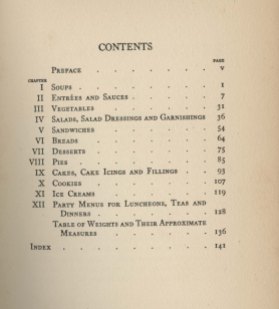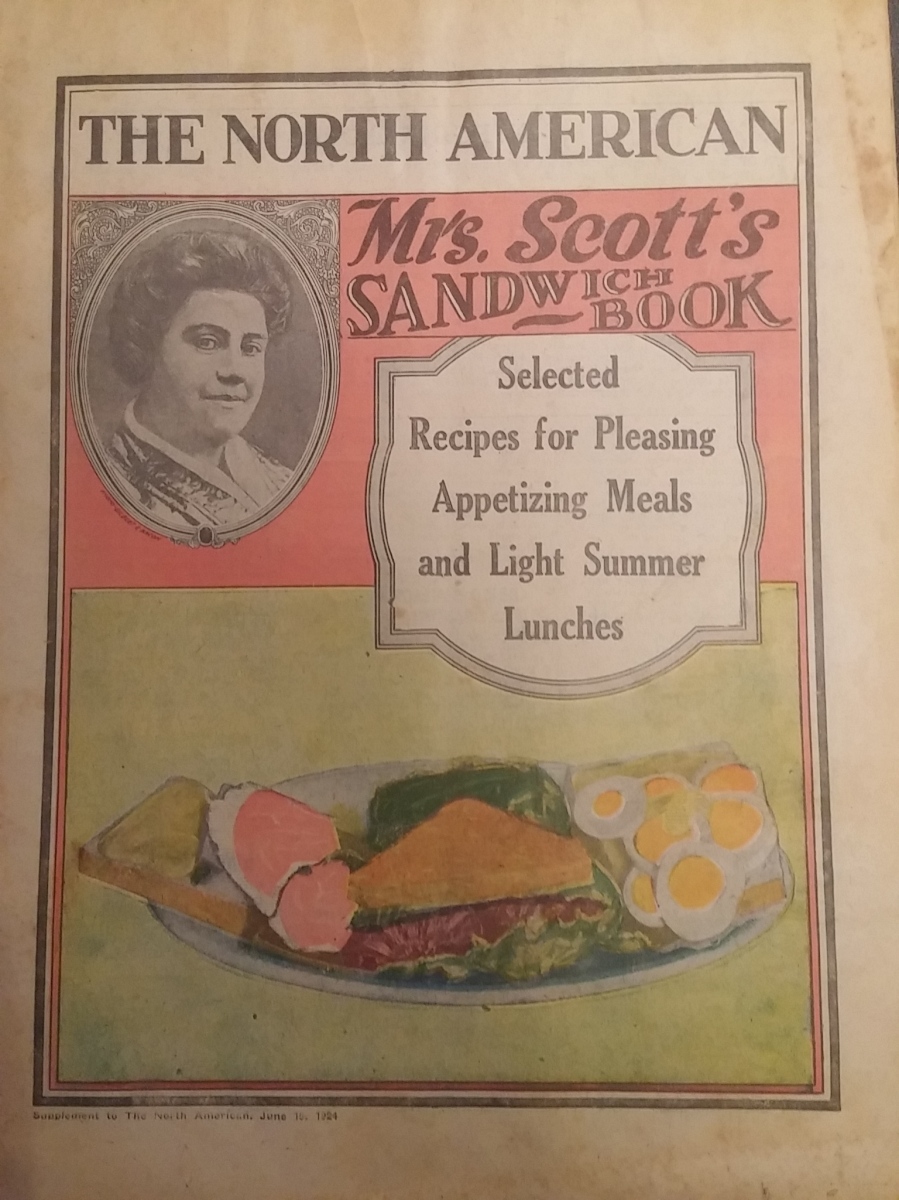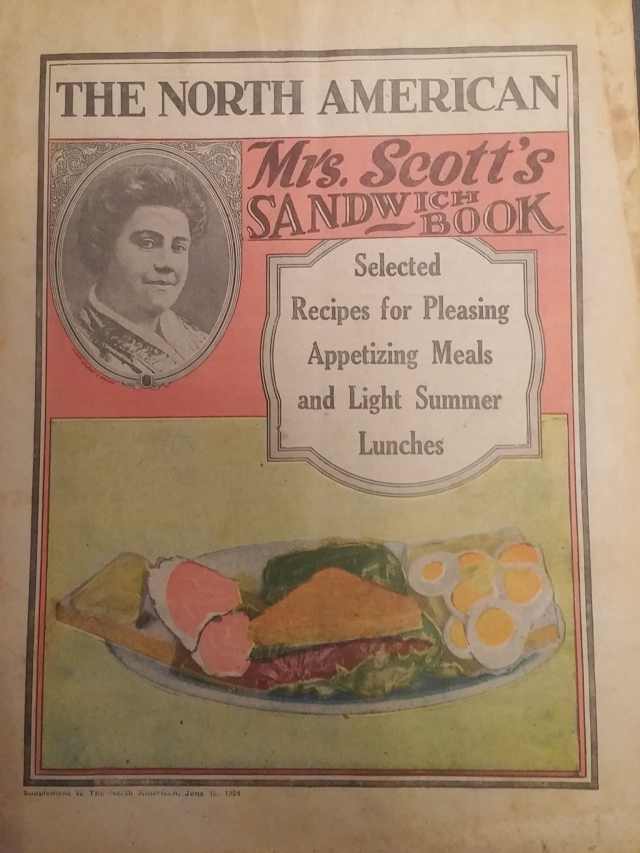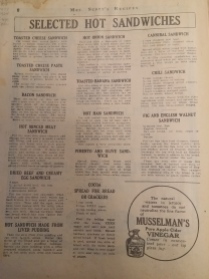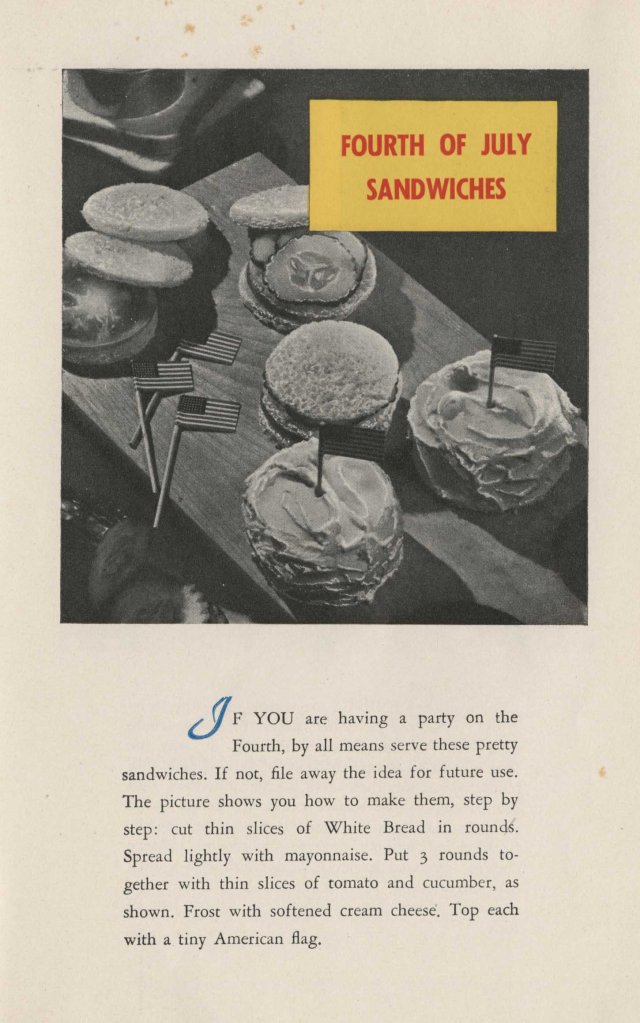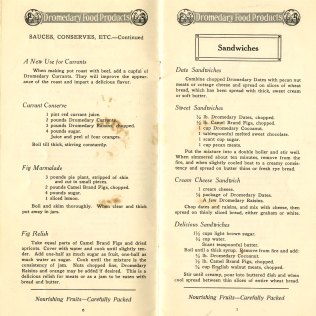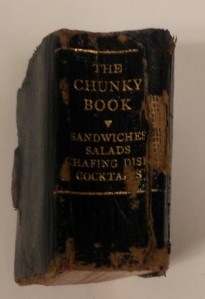This week, rather than profile a single woman, I pulled some of the earliest cocktail books/books with cocktail recipes that we have in our collection that were written by women. In one of these cases, we didn’t originally even know the author’s name, but all three of these books give us a little insight into women and cocktails before the end of Prohibition.
First up, it’s Beverages and Sandwiches for Your Husband’s Friends/by one who knows, published in 1893. We’re not sure who this woman–that it IS a woman–but the anonymity suggests it was likely. These days, however, the book is at the very least attributed to a woman, Mrs. Alexander Orr Bradley. So, we’ll run with it for now…
Mrs. Bradley’s book is relatively short, only covering some basic communal drinks (aka punches) and a few “well-knowns.” It’s only a couple of years after Harriet de Salis’ 1891 Drinks a la Mode, and it doesn’t have quite that variety, but drinks of course, were not Mrs. Bradley’s only goal. Hers was more a book on entertaining groups of men, and as a result, she relies more heavily on the classics or things easy to produce en masse, as it were. Still, it does have a fin-de-siécle (Or “turn of the century”) flair, as the half title page above suggests. “Fin-de-siécle” was also a term that referred the closing of the century in Victorian culture, a time in which the “New Woman” feminist movement emerged. This new feminism influence social, literary and cultural, and political history into the 20th century. Given the time period, we might wonder if there was a little of the “New Woman” in Mrs. Bradley, as she bravely entered the largely-male-dominated field of cocktails and boldly declared her audience of like-minded ladies.
In 1904, May E. Southworth complied a book called One Hundred & One Beverages. Our copy, below, is the 1906 revised edition. She collected popular cocktail and cocktail-adjacent recipes of the time, largely with an eye toward summer, though there are some hot drinks, too.
Compiled, of course, is a key word here. Southworth didn’t, in as far as we know, make up any of these drinks, but she did bring them to a new audience of readers and tasters. Many of her choices are drinks we don’t hear about today (the Beaufort or the Barbed Wire, for example), but if you ask me, some of them might just need a revival. Southworth is surprisingly brand-specific, even when talking about ginger ale, cider, or carbonated water, which isn’t something that was very common yet. Whether it’s commitment or actual corporate sponsorship, we can’t know for sure, but it was a growing practice in the cocktail and cookbook world.
Lastly, we’ll take a quick hop across the pond. Prohibition is one of my favorite periods in cocktail culture history. It didn’t do what it intended and it definitely had some unexpected consequences, including a lot of publishing about cocktails abroad. Mary Woodman’s 1928 Cocktails, Ices, Sundaes, Jellies & American Drinks: How to Make Them is quite an eclectic title. With the contents to match.
Diversity of cocktails was another consequence of Prohibition. After about the 1890s, cocktails may still be talked about in terms of classifications (cups, flips, fizzes, etc.), but they are also becoming individual and Woodman’s book gives us a laundry list of named drinks. In America, Prohibition was leading to cocktails that began to feature soda or juices or homemade syrups to cover up the taste of poor quality base spirits. Which we see in the punches or sugared drinks of the”American Drinks, Etc.” section. Overseas, where production was legal, spirits were being make into new combinations and concoctions like the “Coronation Cocktail” or the “Deep Sea Cocktail” (the latter of which, happily, does not contain seafood, which I half-expected). Woodman, though, ties all of this together into a sort of decadent volume reflecting cocktails and sweets of the time. You need syrups for cocktails, but you can also add them to ice cream. Some ices are a short trip to frappes or later frozen drinks. In other words, Woodman reminds us just how close dessert can be to a cocktail, if you need something sweet. Or sour. 🙂
Even if it wasn’t obvious, women were helping spread the word of cocktails from early on. They knew, as well as anyone, that cocktail were finding a place by the plate at a party or a quiet night at home, and they took on the challenge of incorporating them into their cookbook or tackling them on separately. And I know I can raise my glass to that. Cheers!












